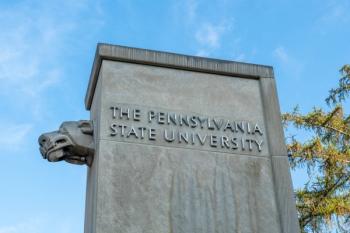
Geraldine Richmond Honored at EAS for Pioneering Research in Molecular Interfaces
Key Takeaways
- Richmond's pioneering use of VSFG and VSFSS techniques has unveiled molecular details at interfaces, impacting fields like environmental chemistry and drug delivery.
- Her research on nanoemulsions and surfactants reveals how molecular interactions at interfaces differ from planar systems, influencing stability and behavior.
Geraldine L. Richmond, Presidential Chair in Science at the University of Oregon, has been awarded the 2025 NYSAS Gold Medal for her pioneering research on molecular interactions at liquid interfaces.
Geraldine L. Richmond, Presidential Chair in Science and Professor of Chemistry at the University of Oregon, has spent decades uncovering the secrets of molecular interactions at liquid interfaces. Her groundbreaking work, which combines nonlinear optical spectroscopy with computational modeling, has transformed our understanding of water, surfactants, and polymers at both planar and curved interfaces, with wide-ranging implications from environmental chemistry to drug delivery. This year, Richmond received the 2025 Gold Medal Award from the New York/New Jersey Section of the Society for Applied Spectroscopy (NYSAS), a recognition of her profound contributions to applied spectroscopy and mentorship of the next generation of scientists.
At the heart of Richmond’s achievements is her pioneering approach to studying these interfaces. By employing advanced techniques such as vibrational sum frequency generation (VSFG) and vibrational sum frequency scattering spectroscopy (VSFSS), she and her team can probe surfaces that remain invisible to conventional spectroscopic tools, revealing the molecular details that underlie phenomena from nanoemulsion stability to interfacial water behavior.
At the 2025 Eastern Analytical Symposium (EAS), Richmond’s Gold Medal Award Symposium offered attendees a unique glimpse into her multifaceted career. Her session highlighted both her technical achievements and her philosophy of science: bridging fundamental research with real-world applications. She emphasized the challenges of designing spectroscopic experiments for nanoemulsions, explaining how the curved surfaces and weak molecular interactions present optical difficulties that require innovative experimental geometries, such as total internal reflection setups, to detect subtle VSF signals.
“With VSFSS, because of its surface specificity as a second-order nonlinear process, the adsorbate signal can only be detected when it is truly at the surface,” Richmond explained at EAS.
Her studies have revealed unexpected insights into how molecules organize at interfaces. For example, her work with carboxylic acid surfactants shows that hydrogen bonding and hydrophobic interactions at low pH draw more surfactant to nanodroplet surfaces, while charged forms stabilize droplets in ways not observed in planar systems. Similarly, her research on polymer-coated nanoemulsions demonstrates how the interplay between electrostatic and hydrophobic forces determines polymer orientation and droplet longevity.
“We study nanoemulsions while they are stable. Losing signal in VSFSS often indicates instability of the droplet, which gives us a molecular-level picture of adsorption dynamics,” Richmond noted.
This attention to molecular detail is complemented by Richmond’s commitment to mentoring young scientists. Adam Hopkins, a former graduate student of Richmond, recalls the vibrant laboratory culture she fostered: “Gerry blended seriousness with fun. She created a research group culture that supported each other, our department, and the community. She helped us trade ideas, mentor younger students, and even organize charitable drives.” Hopkins emphasizes that Richmond’s mentorship extended beyond traditional lab guidance, cultivating leadership skills, collaboration, and social responsibility among her students.
Richmond’s contributions extend far beyond the lab. As founding director of the Committee on the Advancement of Women Chemists (COACh), she has guided over 25,000 women scientists through career development programs in the United States and internationally.
“COACh has been transformative. It’s not just about professional development—it’s about creating lasting structural change,” Richmond said. Her influence also reached public policy, serving as Undersecretary for Science and Innovation at the Department of Energy from 2021 to 2025, where she applied her scientific expertise to broader policy initiatives.
Hopkins reflects on Richmond’s broader impact on his career: “Even though Gerry was often traveling the world to promote women in science or work on science diplomacy, she maintained a lab environment where we thrived. The combination of mentorship, cutting-edge research, and human connection has shaped how I approach both science and collaboration.”
Richmond’s work exemplifies the synergy between fundamental science and societal impact. Her studies of interfacial water inform climate models and pollutant transport, while her exploration of nanoemulsion behavior aids the design of safer surfactants for environmental remediation and drug delivery. She continues to inspire both her colleagues and her students to pursue questions that are both intellectually challenging and socially meaningful.
As she reflects on decades at the interface of chemistry and society, Richmond remains curious and committed. “How to get the public to understand how important light itself is as a tool for understanding the world around us—and the prevalence and importance of surfaces in our everyday life—still keeps me motivated,” she said.
Newsletter
Get essential updates on the latest spectroscopy technologies, regulatory standards, and best practices—subscribe today to Spectroscopy.





